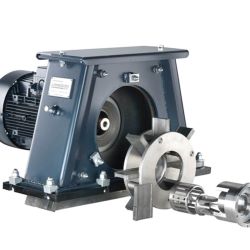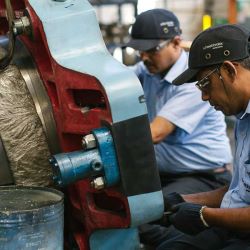A major supplier of parts to the automotive industry, has reduced downtime at its forge through a complete overhaul of two Tilghman Tumblast machines.
The updates, carried out by Wheelabrator Plus over the past five years, have given the over 15-year-old machines a new lease of life.
Despite increased production demands, they are still operating smoothly years after the first upgrades. Working for major automotive manufacturers, the forge produces hubs and other automotive components. After forging and heat treatment, the parts are put through the Tumblast machines to remove heat treat scale, before being sent out to the customer.
An increase in demand led the company to contact Wheelabrator Plus to analyze the machines’ performance. Reliability was proving a problem, as was the sourcing of replacement parts. This in turn was leading to prolonged periods of downtime to carry out repairs. An assessment of the machines showed that the external cabinets were still in good condition, but to improve reliability and availability of parts, Wheelabrator Plus recommended replacing the internal components.
This work would, in effect, give the forge two new Tumblast machines, but at a significantly lower cost. Each machine was completely gutted and internally redesigned, using parts that were readily available in the US and therefore easy to procure and replace. The flights, mill belt, barrel head, wear plates, bearings, and more were all replaced with standard parts.
Although, in the intervening time, the demand for the forge’s products has continued to increase, the two refurbished machines have kept pace. The redesign has delivered increased reliability and a decrease in downtime and maintenance. In addition, Wheelabrator Plus were able to achieve a slight increase in each machine’s capacity, taking them from 21 to 22 cubic feet.
Andy Fletcher, Regional Sales Manager at Wheelabrator Plus said: “We’ve worked with this customer for six years, ever since they first asked us to take a look at their two Tilghman machines.”
“I started by analyzing the machines to establish what the best course of action was. It was clear to me that the equipment could still have plenty of time left to run with some clever refurbishment work, which would cost less than half the price of a new machine. We always look to recommend the most cost effective option for the customer to deliver the results they need. For the two Tilghman machines, a refurb was a good option. It’s great to see that, six years on from the first redesign, the machines are still going strong.”


